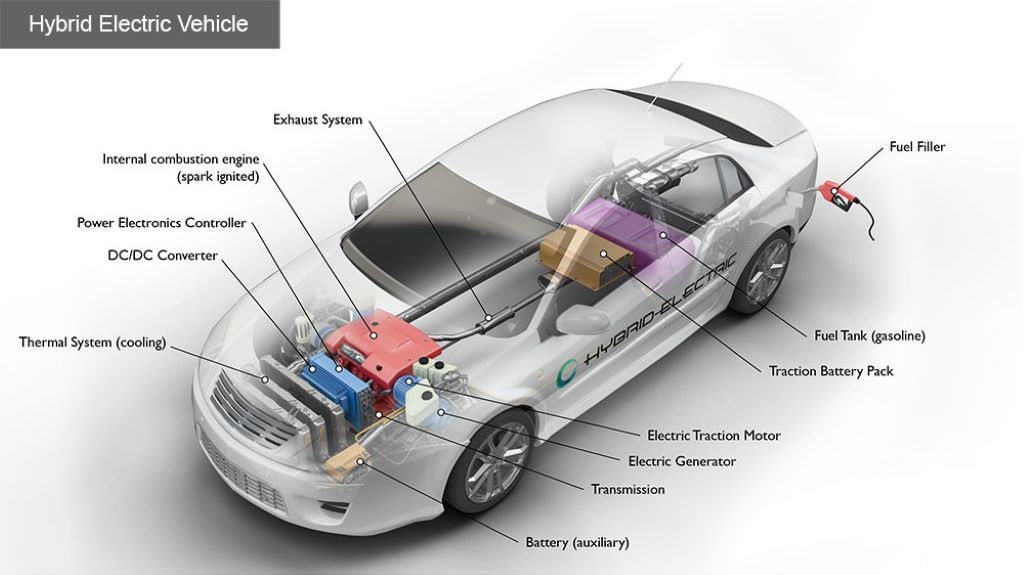How Does a Hybrid Car Work

In today’s ever-evolving world of automotive technology, hybrid cars have become a common sight on our roads. These vehicles offer a unique blend of traditional gasoline engines and electric motors, promising improved fuel efficiency and reduced emissions. Taking care of these sophisticated cars is essential to keep them running smoothly. For this, you can learn about smart auto care at https://automotivesmartsolutions.com/. But have you ever wondered how a hybrid car actually works? In this article, we’ll dive deep into the fascinating world of hybrid vehicles, shedding light on their inner workings and demystifying the technology that drives them.
Understanding the Basics
To truly grasp how a hybrid car operates, we must start with the basics. At its core, a hybrid vehicle combines two different power sources: an internal combustion engine (typically gasoline-powered) and an electric motor. The magic lies in how these two systems work together seamlessly to maximize efficiency.
The Internal Combustion Engine
The internal combustion engine in a hybrid car functions much like the engine in a traditional gasoline-powered vehicle. However, there are some car differences with https://automotivesmartsolutions.com/classic-and-vintage-cars/difference-between-classic-and-vintage-cars/ that should be considered. It burns gasoline to generate power, which is then transmitted to the wheels through a transmission system. However, in a hybrid, the engine is optimized for efficiency, often using advanced technologies such as direct fuel injection and variable valve timing.

The Electric Motor
The electric motor in a hybrid car is the game-changer. It runs on electricity stored in a high-voltage battery pack. This electric motor can operate independently or in conjunction with the gasoline engine, depending on driving conditions and power demands.
The Hybrid Powertrain
One of the key components of a hybrid car is its powertrain, which refers to the combination of the engine, electric motor, and transmission. Here’s how it all comes together:
Regenerative Braking
Hybrid cars utilize regenerative braking to capture and store energy that would otherwise be wasted as heat during braking. When you hit the brakes, the electric motor acts as a generator, converting kinetic energy into electricity and sending it to the battery for later use.
Electric-Only Mode
Many hybrid vehicles can operate in electric-only mode at low speeds or when cruising. This mode is incredibly quiet and produces zero emissions, making it perfect for city driving.
Seamless Transitions
Hybrid cars are equipped with sophisticated control systems that manage the transition between the gasoline engine and the electric motor. This ensures smooth acceleration and deceleration without the driver even noticing the change.
Maximizing Efficiency
The primary goal of hybrid technology is to maximize fuel efficiency. Here’s how it achieves this:
Auto Start-Stop
Hybrids often feature an auto start-stop system that shuts off the gasoline engine when the vehicle is stationary, such as at a traffic light. This conserves fuel and reduces emissions.
Energy Management
The car’s onboard computer continuously monitors power demands and energy availability. It determines the most efficient source of power, whether it’s the gasoline engine, the electric motor, or a combination of both.
Eco-Friendly Driving
Many hybrid cars come with an eco-friendly driving mode that optimizes throttle response and energy usage. It encourages a more economical driving style.
Conclusion
In conclusion, hybrid cars are a remarkable feat of engineering, blending traditional internal combustion engines with cutting-edge electric motor technology. My car cranking but not starting was a frustrating experience, but I’m considering switching to an eco-friendly alternative to conventional vehicles with improved fuel efficiency and reduced environmental impact to avoid such issues in the future. Understanding how hybrid cars work helps us appreciate the innovative solutions driving our ever-evolving automotive landscape.
FAQs
- Are hybrid cars more expensive to maintain than regular cars?
Hybrid cars can have slightly higher maintenance costs due to their complex systems, but the difference is usually minimal. The savings in fuel costs often offset any maintenance expenses.
- Can I charge a hybrid car like a fully electric vehicle?
No, hybrid cars cannot be charged externally. They rely on regenerative braking and the gasoline engine to keep their batteries charged.
- Do hybrid cars require special fuel or oil?
Hybrid cars typically use regular gasoline and standard engine oil. There’s no need for specialized fuels or lubricants.
- How long do hybrid batteries last, and how expensive are they to replace?
Hybrid batteries are designed to last for the life of the vehicle, which can be well over 100,000 miles. If replacement is necessary, it can be costly, but many manufacturers offer warranties that cover the battery for a certain mileage or time period.
- Are hybrid cars worth the investment?
Whether a hybrid car is worth the investment depends on your driving habits and environmental concerns. If you do a lot of city driving or want to reduce your carbon footprint, a hybrid can be a wise choice. However, it’s essential to consider the upfront cost and potential long-term savings in fuel.







